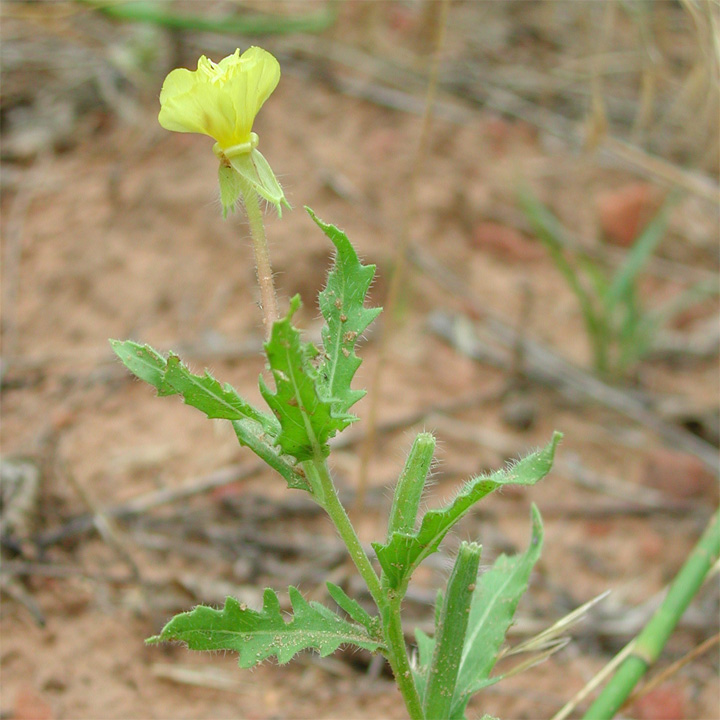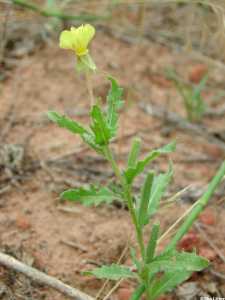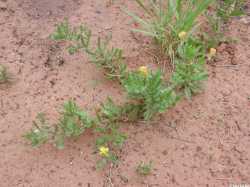Oenothera laciniata is an erect weedy evening primrose with small flowers at least relative to other species of Oenothera. It is found at middle elevations in meadows. The flowers are axillary. The leaves are lanceolate and remotely dentate.
In sandy to very sandy soil along roadsides and in fallow fields. We have one specimen from an open woods and one from hard, white clay soil in a fallow field. It has already become a weed in some kinds of soils and in time it will doubtless become a weed throughout the state.
Duration: Annual
Nativity: Native
Lifeform: Forb/Herb
General: Herbaceous annual or perennial, simple or branching erect, ascending, or semi-prostrate, to 70 cm tall, strigose, villous, or hirsute.
Leaves: Alternate, lance-oblong or oblanceolate, sinuate-dentate or only slightly toothed, to 10 cm long, the lower ones petioled, the upper ones sessile or on short petioles.
Flowers: Yellow or white, aging pink or red, petals 5-18 mm long, solitary in the upper leaf axils, hypanthium 15-35 mm long, deciduous after flowering, sepals 4, 6-12 mm long, stamens 8.
Fruits: Capsules cylindric, 10-35 mm long, 4-celled, dehiscent. Seeds many, brown, evenly pitted.
Ecology: Found in pine forests, damp and disturbed areas, from 1,500-9,000 ft (457-2743 m); flowering May-October.
Notes: The deeply incised leaves and small yellow flowers help to identify this species.
Ethnobotany: Specific use of the species is unknown, but the genus was used as a compound infusion wash to treat sore skin, and the leaves were boiled or fried and eaten as greens.
Etymology: Oenothera is from Greek oinos, wine and thera, to imbibe, while laciniata means torn or deeply cut, referring to the fringed petals.
Synonyms: Raimannia laciniata
Editor: LCrumbacher, 2011
Annual, simple or branched from the base, decumbent to erect, 1-4(-8) dm; lvs oblanceolate to oblong or lanceolate, 3-8 cm, tapering to the base, prominently sinuate-dentate to pinnatifid, green, sparsely puberulent to glabrous above; fls few, sessile in the axils of the scarcely reduced upper lvs, not forming a distinct spike; hypanthium hirsute, 1.5-3.5 cm; sep 6-12 mm, reflexed separately or connivent; pet 5-18 mm; fr linear, straight or curved, 1.5-3.5 cm; seeds thick-ellipsoid, pale brown, conspicuously pitted; 2n=14. Dry, usually sandy soil; Me. to S.D., s. to S. Amer. May-Oct. Our plants, as here described, are var. laciniata.
Gleason, Henry A. & Cronquist, Arthur J. 1991. Manual of vascular plants of northeastern United States and adjacent Canada. lxxv + 910 pp.
©The New York Botanical Garden. All rights reserved. Used by permission.






